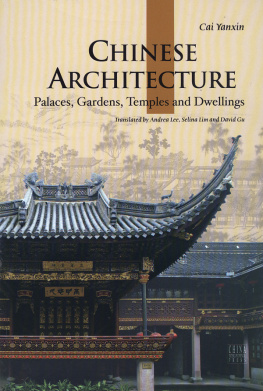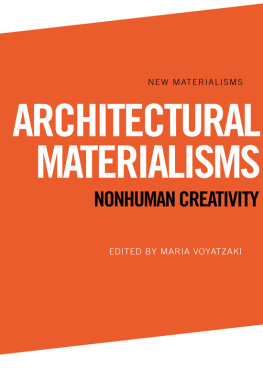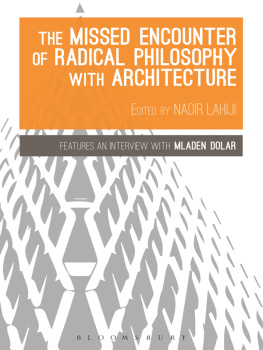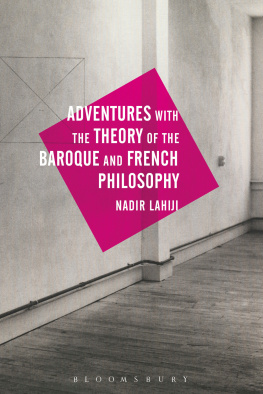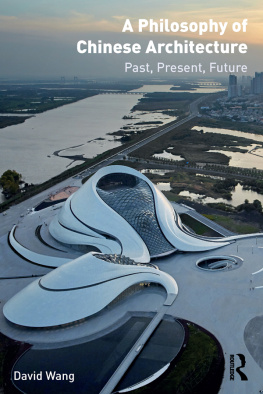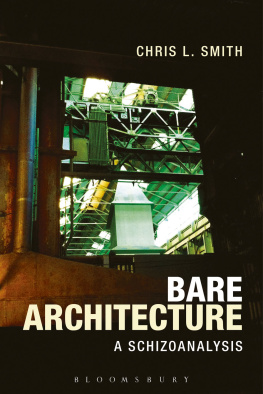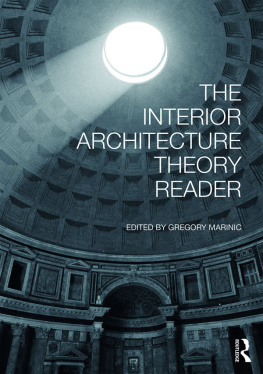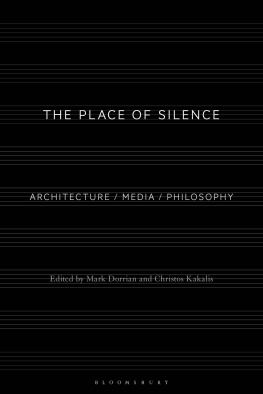Zuzana Kovar is a lecturer in architecture at Griffith University, Australia, where she teaches design and contemporary architectural theory. She is also co-director of the practice ZUZANA&NICHOLAS architects, who are engaged in a range of commercial project work, exhibition work and research.
The work of Zuzana Kovar, drawing on Gilles Deleuze but more specifically on Julia Kristeva, is an essential contribution to the project of overcoming the space-body dualism in architectural thinking. This book marks a crucial and admirable development in the progress of such theory.
Andrew Benjamin, University of Technology Sydney and Kingston University London

Published in 2018 by
I.B.Tauris & Co. Ltd
London New York
www.ibtauris.com
Copyright 2018 Zuzana Kovar
The right of Zuzana Kovar to be identified as the author of this work has been asserted by the author in accordance with the Copyright, Designs and Patents Act 1988.
All rights reserved. Except for brief quotations in a review, this book, or any part thereof, may not be reproduced, stored in or introduced into a retrieval system, or transmitted, in any form or by any means, electronic, mechanical, photocopying, recording or otherwise, without the prior written permission of the publisher.
Every attempt has been made to gain permission for the use of the images in this book. Any omissions will be rectified in future editions.
References to websites were correct at the time of writing.
International Library of Architecture 2
ISBN: 978 1 78453 793 7
eISBN: 978 1 78672 287 4
ePDF: 978 1 78673 287 3
A full CIP record for this book is available from the British Library
A full CIP record is available from the Library of Congress
Library of Congress Catalog Card Number: available
Contents
Figures
Diagram for the Deleuzean assemblage versus the Tschumian architecture
The wall cavity section
The wall cavity diagram
The sewing room section
The sewing room diagram
The clinic section
The clinic diagram
Abject(ion)s possible relations
Moth print
The undercroft
Architecture on the plan(e) of immanence
Transfer paper side
Linen side
Graphite sew line, transfer onto linen during sewing process
Detail
Linen sleeve for transport and storage
Transfer upon contact
Tree diagram
Distinction between scaffold supporting object and only scaffolds
Scaffolded bodies and assemblages
Abject(ion) on side of bodies and assemblages (for clarity, the scaffold is represented here as a dashed boundary line)
Concentration of processes
Abjection as common thread
Acknowledgements
There are many people and events that become intertwined in and that have an effect on the publishing of a book. First I would like to acknowledge Dr Ross McLeod, Dr Juliette Peers and Dr Hlne Frichot, who were instrumental in the development of the content in various ways and at various times: Hlne through her direction in the initial stages of this project, through the sharing of her philosophical knowledge and through our regular discussions; Juliette through her insightful injections of knowledge at key times; and finally Ross, whose critique of the structure and the key arguments on an ongoing basis greatly benefited the work. I would also like to acknowledge the support of the School of Architecture and Design at the Royal Melbourne Institute of Technology for providing the framework for the development of this work.
Further to Ross, Juliette and Hlne, there are numerous people who have had an effect on the thinking present here over the last several years. These people, through either their reading of the manuscript or critique of presentations, have greatly enriched the project: Esther Anatolitis, Suzie Attiwill, Karen Burns, Marion Campbell, Peter Downton, Pia Ednie-Brown, Bill Fox, Lyndal Jones, Stephen Loo, Julieanna Preston, Jane Rendell, Sean Ryan, Undine Sellbach, Cathy Smith, Chris Smith, Teresa Stoppani and Linda Marie Walker.
Most importantly, I would like to acknowledge my partner and fellow practitioner Nicholas Skepper. This book would not have been possible without his love, friendship and critical feedback. I am also thankful for the various apartments and houses in which Nick and I have lived over the past six years: through their own idiosyncrasies and states of decomposition, each of them has proved endlessly stimulating. And my gratitude also goes to our adopted greyhounds, Max and Maggie, who make working from the home studio enjoyable and provide distractions at critical times.
Finally, I would like to mention my Grandpa, Stanislav Ort, who did not live long enough to get to see the inception of this book. I dedicate this work to him.
This research was partially supported by the Australian Government through the Research Training Program (RTP) Scholarship. The copy-editing and indexing of this research was funded by the Griffith University through the Research Start Up Fund.
Introduction: Architecture in abject(ion) bodies, spaces and their relations
Examining the concrete floor, you see greys, blacks, yellows, smudges of white and reddy-orange stains, holes at 15-centimetre intervals, dirt at the peripheries, cracks and construction joints. To this you contributed splotches of white when you painted two of the walls.
Your gaze shifts to the nogging of an unpainted wall on the right, where a draught is rocking a dead fly suspended on a strand of hair backwards and forwards. Atop the nogging, and in the groove of each chamferboard cladding the wall to the outside, films of dust lie seemingly still. Yet, when the afternoon sun shines through the rusted shut bay of louvres, it reveals millions of particles in flight. These, like many others that have come to rest momentarily on the numerous horizontal surfaces of this studio space books, tables, windowsills stir incessantly at your every move, passing through and around you. Since moving down here, you have voluntarily subjected yourself to the volatile field of matter that is the studio. There is a persistence to this matter. Each morning before you begin work, tables must be swept clean and pages of current work shaken out. But even then, dandruff, grass seeds and vehicular soot manage to accumulate on the table within a matter of hours. Writing from left to right in a repetitive motion allows you to keep a certain area of the page and table clean, but it also gradually wears the edge of the table down and rubs dead skin cells and sweat into the surfaces.
There are other things, too: the vine growing in front of the window, perpetually finding crevices through which to come in, the regular drip into a glass from the rusted-through water main, which with its splashes has sent the wall orange. And then there are the stains that you make from sitting the tea bags on the cutting board, the grubby fingerprints that you put on the door for the lack of a door handle. And these are only the exchanges that are perceptible.
***
Thinking about bodies, spaces and their relations has long been a central concern of philosophy and architecture, and has in the past 20 years or so reached yet another critical turning point within architecture, given the explorations that are taking place into biology, matter, flows and emergent phenomena. Despite these relatively recent shifts, which speak to a certain volatility, a dualistic understanding of bodies and spaces seems to a large degree to prevail within the architectural discipline in the form of phenomenology and its conceptions of the body as subject and space as object. Given the architects preoccupation with articulating spaces in order to manifest idiosyncratic moments that are described through our subjective experience, it is perhaps not hard to see why such an understanding continues to be of value. But while phenomenology, being dualistic, provides for a sufficient account of our engagement with space, its key shortcoming within architecture is that it is a static notion of things. It therefore is incapable of addressing transitions and exchanges not only between bodies and spaces, but within the bodies and spaces themselves. To shift the way architecture thinks of bodies, spaces and their relations is an immense task that requires not only great rigour but also an awareness of and a drawing upon further disciplines. My hope here is to contribute to this contemporary thinking.


